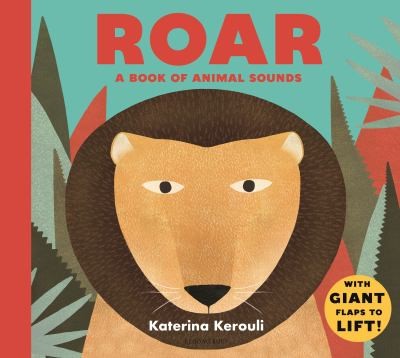Let’s face it, reading to a toddler is hard. We want them to sit still and listen, and they want to throw the book in the air and run around in circles screaming. Because littles have short attention spans and limited vocabulary, following a story with only their eyes and ears is really hard. Two and three-year-olds need to be physically involved with their whole bodies.
 So let’s give them books that invite physical interaction. Your child can be a part of the story by dramatizing, making noises, tracing pictures, playing games. My toddler’s current favorite book, Roar: a Book of Animal Sounds, by Katerina Kerouli, is perfect for this, taking you on a delightful walk through the jungle where you can find animals and make their noises.
So let’s give them books that invite physical interaction. Your child can be a part of the story by dramatizing, making noises, tracing pictures, playing games. My toddler’s current favorite book, Roar: a Book of Animal Sounds, by Katerina Kerouli, is perfect for this, taking you on a delightful walk through the jungle where you can find animals and make their noises.
Here are some ways to interact with this book that will hold onto those short attention spans:
- Get into the mood by looking at the end papers. We are going to the jungle!
- Lift those flaps. I have yet to find a baby who does not like to lift a good flap. Your child may not be able to at first, but you are there to demonstrate, to guide and assist. Before long, they will want to do it themselves, developing fine motor skills in the process (finger muscles!). The flaps in this book are large and stunning.
- Get noisy. Every flap in this book is a creature’s mouth, and when a mouth is open it must roar, hiss, or snap! You will make the noises first, but your child will want to join you. They should, with gusto. Animal noises are easier to say than words, great for building confidence and exercising vocal chords!
- Emphasize different aspects of the vocabulary with each reading. The first time, focus on the animal sounds. Practice the animal names the next time, pausing to let your child repeat after you. Later, you turn it into a guessing game! Finally, physically demonstrate descriptive vocabulary by tickling your child’s chin while reading about the furry monkey, tracing the slithering snake with your finger, or pretending to flick your tongue like a snake.
- Reinforce the new vocabulary during play time. Pretend to be animals, make animal crafts, play with animal toys, and casually but consciously use words from the book, such as “lurk,” “prowl,” or “golden.”
After spending a few days with this book, my toddler surprised me by reading it herself. She opened to the first page, said “Tiger, what are you doing?!,” then lifted the flap and roared.
- April Harden-Akbas, Children's Library Associate, Central Library